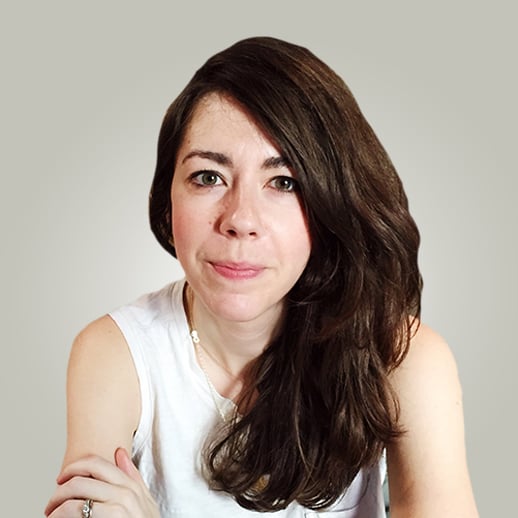Vaginal discharge can change over the course of a woman’s life. Chances are, you’ve long been familiar with your usual baseline and can tell if something is off. But as you enter menopause, you may be experiencing increased vaginal discharge and different types of vaginal discharge. This could lead you to wonder – is vaginal discharge normal?
Vaginal discharge is a mix of vaginal cells, bacteria, mucus, and other fluids. It’s produced by the vagina and the cervix to keep the vaginal tissues lubricated and protect against infections (like vaginal or urinary tract infections).1 The production of vaginal discharge is stimulated by the hormone estrogen. As estrogen levels in the body naturally decrease during menopause, so does the amount of discharge made by the vagina and the cervix.2 This can also lead to changes in vaginal discharge after menopause.
These shifts can lead to questions about what’s common and what isn’t during and after menopause. Here we include three concerns about vaginal discharge in menopausal women, when to talk with your healthcare provider, and simple steps you can take to protect your vaginal health.
Vaginal Discharge After Menopause
It’s typical for a woman to experience a decrease in normal vaginal discharge during and after menopause. The decrease is due to lower levels of estrogen, which stimulates the cervix and the vagina to produce discharge.3
Abnormal types of vaginal discharge may become more common with age, though. As a woman’s vaginal tissues become thinner and drier, she may be more prone to inflammation and irritation. That can lead to unhealthy discharge as well as uncomfortable symptoms like burning, itching, discomfort during sex, or urinary tract infections.4
For a quick video on vaginal discharge changes during menopause from our Chief Medical Officer, Dr. Alyssa Dweck, check out the below:
Different Types of Vaginal Discharge After Menopause
Before menopause, it’s normal for women to experience up to one teaspoon of white or clear, odorless discharge each day. It’s also totally normal for this amount to vary from one woman to another. At different points of a woman’s menstrual cycle, she’ll produce different amounts of discharge with consistencies ranging from thin and milky to thick and mucus-like.5
You may be wondering at what age vaginal discharge stops. Normal vaginal discharge typically tapers off during and after menopause as estrogen levels in the body fall. When considering vaginal discharge in older females, many may find it almost disappears completely.
Abnormal discharge can happen throughout a woman’s life, but when it occurs during or after menopause, it’s more likely to be the result of irritation, inflammation, or infection caused by drier, thinner vaginal tissues.6 According to Dr. Rebecca Levy-Gantt, this type of infectious discharge color may appear yellow or green or be associated with odor, itching or discomfort.
Vaginal Discharge Care and Treatment
Every woman’s vaginal discharge is different – both before and after menopause. If you typically experience some amount of normal discharge (think white or clear, mostly odorless, and not associated with discomfort), that shouldn’t be a cause for concern, Dr. Levy-Gantt notes.
If you notice something new or different about your vaginal discharge while going through menopause, let your doctor know. “Any sudden change in discharge or any discharge that seems unusual should be evaluated,” says Dr. Levy-Gantt. That includes7:
- Heavier or thicker than usual vaginal discharge
- White and clumpy or pus-like vaginal discharge
- Greenish, yellowish, or grayish vaginal discharge color
- Brown, pink, or blood-tinged vaginal discharge
- Fishy- or foul-smelling vaginal discharge
- Associated with itching, burning, soreness, or a rash
Unusual or uncomfortable vaginal discharge after menopause could be a sign of an infection or irritation, or in very rare cases, certain gynecologic cancers or precancers. Your healthcare provider can review your symptoms to determine the cause. Putting off a diagnosis or trying to treat the problem at home, on the other hand, could potentially cause your symptoms to become worse.8,9
Lifestyle Changes for Healthy Vaginal Discharge During and After Menopause
Taking steps to promote a healthy vaginal environment can help reduce the risk for vaginal infections and irritation that can lead to abnormal or uncomfortable discharge. These include10:
- Washing the vaginal area with warm water or an unscented cleanser. void scented soaps if you are sensitive to them. Wash with your hands, not a washcloth or loofah, which may be too abrasive.
- Avoid douching. Douching disrupts the balance of healthy bacteria in the vagina and can lead to infections.
- Skip scented products. That includes scented bath products, tampons or pads, wipes, sprays, powders, detergents or toilet paper, if you’re sensitive.
- Wear comfortable cotton-crotch underwear. Underwear that’s tight or restrictive or made from synthetic materials might irritate vaginal and vulva tissue.
- Consider a probiotic for vaginal health. A vaginal probiotic with live, active lactobacillus strains can help to balance and maintain a healthy vaginal microbiome.
Resources
- https://www.uptodate.com/contents/vaginal-discharge-in-adult-women-beyond-the-basics
- https://www.merckmanuals.com/home/women-s-health-issues/symptoms-of-gynecologic-disorders/vaginal-discharge
- https://www.merckmanuals.com/home/women-s-health-issues/symptoms-of-gynecologic-disorders/vaginal-discharge
- https://www.mayoclinic.org/diseases-conditions/vaginal-atrophy/symptoms-causes/syc-20352288
- https://www.merckmanuals.com/home/women-s-health-issues/symptoms-of-gynecologic-disorders/vaginal-discharge
- https://www.healthline.com/health/womens-health/menopause-discharge#causes
- https://www.merckmanuals.com/home/women-s-health-issues/symptoms-of-gynecologic-disorders/vaginal-discharge
- https://www.uptodate.com/contents/vaginal-discharge-in-adult-women-beyond-the-basics
- https://www.merckmanuals.com/home/women-s-health-issues/symptoms-of-gynecologic-disorders/vaginal-discharge
- https://www.uptodate.com/contents/vaginal-discharge-in-adult-women-beyond-the-basics










Comments
Post commentTHANK FOR THE INFORMATION.